Vijayavatika: The Uber-Blend of Ancient and Contemporary
From Vijayavatika to Bezawada to Rajendracholapura and finally, to Vijayawada, one thing has remained consistent throughout the transition of this revered city: its remarkable legacy of victory across the ages. Whether through folklore, relics, or legends, Vijayawada has always been associated with triumph. According to some accounts, it was initially founded by King Madhava Varma (440-460 AD) of the Vishnukundin dynasty and subsequently expanded by the Chalukyas.
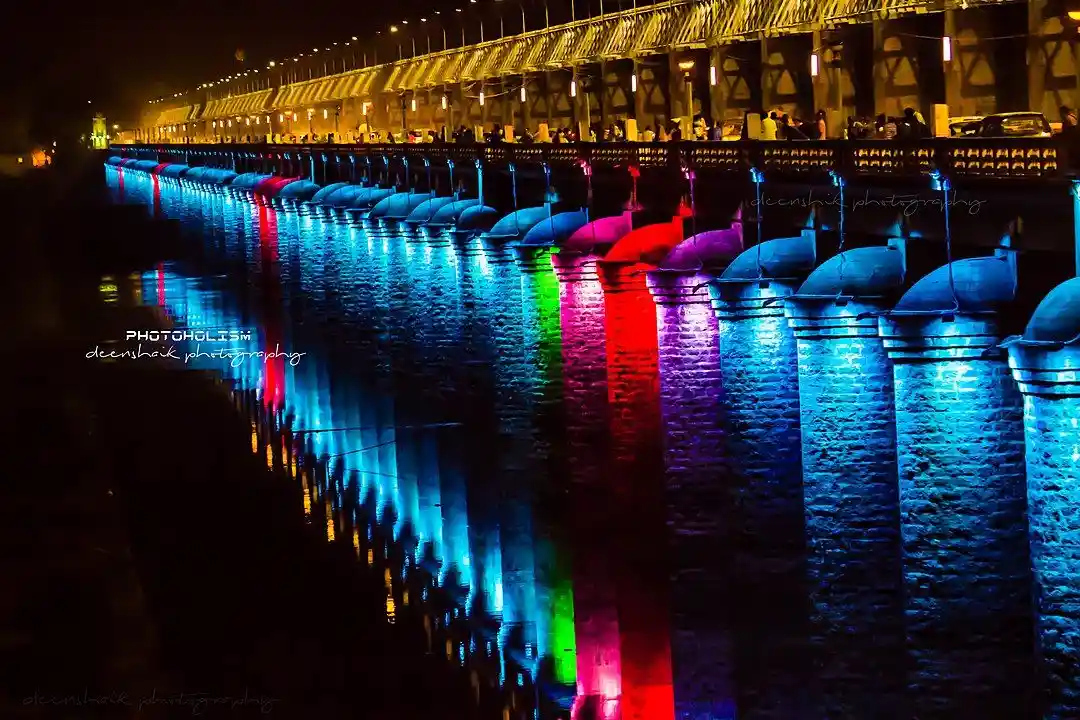
Prakasam Barrage at Vijayawada; Source: Wiki Commons
However, the dynamism and innovative experiments of the Eastern Chalukyas are immortalised in the monolithic rock-cut Undavalli caves, offering a glimpse into an era of artistic experimentation and the fusion of cultures.
The caves not only represent the confluence of Buddhist, Jaina, and Hindu faiths but also reflect the birth of Gupta Empire architecture. This architectural marvel stands as one of the finest gems of Indian architectural heritage. The caves are deeply rooted in the ancient glory of Vijayawada, marking significant epochs in history.
Vijayavatika's name is intertwined with legends such as the victory of Kanaka Durga Devi, the goddess who briefly rested on this land after defeating a demon. This victory is commemorated today through the pilgrimage site of the Kanakadurga temple, located amidst the lush Indrakiladri hills. The sacred ambience of the place emanates from the power it imparts to the devotees who visit the temple each day. The construction of the Kanaka Durga Temple is attributed to Thribhuvana Malla, the Chalukya (western) King of the 10th century A.D. The temple's highlight is the four-foot-tall statue of the deity Maa Kanaka Durga.
From Vijayavatika to Bezawada to Rajendracholapura and finally, to Vijayawada, one thing has remained consistent throughout the transition of this revered city: its remarkable legacy of victory across the ages. Whether through folklore, relics, or legends, Vijayawada has always been associated with triumph. According to some accounts, it was initially founded by King Madhava Varma (440-460 AD) of the Vishnukundin dynasty and subsequently expanded by the Chalukyas.
With the recent shift of the administrative capital in the state of Andhra from Hyderabad to Vijayawada, the city has retained its glory from the times of King Chandra Sri Satakarni to the present-day administration, establishing itself as a land of blended power. Historical archives indicate that King Chandra Sri Satakarni ruled this city in 208 AD.
During the reign of the Eastern Chalukyan rulers, known as the Chalukyas of Vengi and belonging to the Badami Chalukyas lineage, Bezwada served as the seat of administrative powers. Records show that the commercial prowess of this land reached its peak under the rule of King Krishna Deva Raya.
Centuries before all this, Vijayavatika was a hub of exploration for Buddhism. The local folklore and relics dated to 260 BC, when King Asoka conquered the Kalinga Empire, provide evidence of Vijayavatika's significance during the Kalinga Empire. The Buddhist lineage is reflected in the black granite Buddha statue adorning the Victoria Jubilee Museum, along with many precious ancient artefacts found in and around this glorious city.
The visit of Xuanzang (Hsuan-Tsang), the Chinese traveller, in 639 A.D. further confirms the Buddhist influence and enriches the city's fame as a site of cultural exchange. The renowned Undavalli caves are also mentioned in relics as the guest house of the Buddhists.
The name Bezwada, etched in stone relics found on the banks of the Krishna river, is associated with a story of Arjuna who was asked by the goddess of River Krishna to create a path that would help her merge into the Bay of Bengal. Arjuna obliged by making a Bejjam (hole) through the mountains, giving the place its name Bejjamwada, which eventually transformed into Bezwada.
As one travels through the commercial and contemporary aspects of each era, the pioneering spirit of Vijayawada's ancestors is evident and continues to thrive. The Prakasam Barrage and the world's largest annual Mango market make this city highly sought after in Deccan India.
Rediscovering the city's historical glory is easy when taking a stroll around the Kondapalli Kota (fort), built in the 14th century and restored by the Andhra Pradesh State Department of Archaeology and Museums. Built by the Musunuri Nayaks, the fort reflects a parallel history with its Persian, Mughal, and Bahmani styles of architectural blends. The entrance, named the Dargah Darwaza, is made of a single boulder of granite and is adorned with beautiful inscriptions and paintings.
The city also capitalises on the communal harmony among devotees, attracting visitors to major sites such as famous temples, architecturally renowned churches like St. Mary's, and the Hazrat Bal Masjid, which treasures the relic of Prophet Muhammad's Mubarak hair.
While the first batch of administrative government employees is busy shifting from Hyderabad to Vijayawada, the streak of victorious pursuits continues —
While the first batch of government employees is busy shifting from Hyderabad to Vijayawada, the city's streak of victorious pursuits continues. Vijayawada has been recognised as the Global City of the Future by the McKinsey Quarterly, awarded the ISO 37120 platinum level certification in 2018, and included in the Global Cities Registry.
Vijayawada, being the cultural, commercial, educational, and political capital of South India, is a storehouse of ancient and contemporary triumphs. It is undoubtedly one of the best places to experience and appreciate India's rich heritage and the remarkable power seat of both sacred and modern victories.
Kondapalli toys embody a blend of cultural heritage and commercial fame. This land encapsulates the merging of mythologies into cultural heritage, while folklore reflects the beauty of the Indrakiladri hills. The folklore narrates the tale of Yaksha Keela's boon from Goddess Durga to reside eternally in his heart, and the radiant appearance of Goddess Durga in her eight-armed form while Indra and his deities chanted Kanaka Durga, hence the name Indrakeeladri.
Vijayawada continues to carry its ancient legacy as the seat of power. Throughout history, it has witnessed numerous power shifts among dynasties and kingdoms, each adding to its glory, fame, and prosperity. The Vishnukundin Rulers, who left their illustrious mark in the Mogalarajapuram caves, exemplify this rich heritage. The caves, dedicated to Lord Shiva, were discovered by 19th-century archaeologists who believed them to have been crafted during the Vishnukundin reign of the 7th century.
The legend of victory is also intertwined with the Mahabharata and the serene hills where Arjuna received the boon of Pashupatastra from Lord Shiva through his Siddi tapasya, a spiritual meditation to seek enlightenment. The name Rajendracholapura is mentioned in inscriptions dated 927-933 A.D., possibly due to the rule of the Cholas until the Muslim kingdoms dominated the region. Some even claim that the caves were first established by King Madhava Varma (440-460 AD) of the Vishnukundin dynasty and later expanded by the Chalukyas.

Xuanzang (Hsuan-Tsang); Source: Silk Road — History of the Silk Road
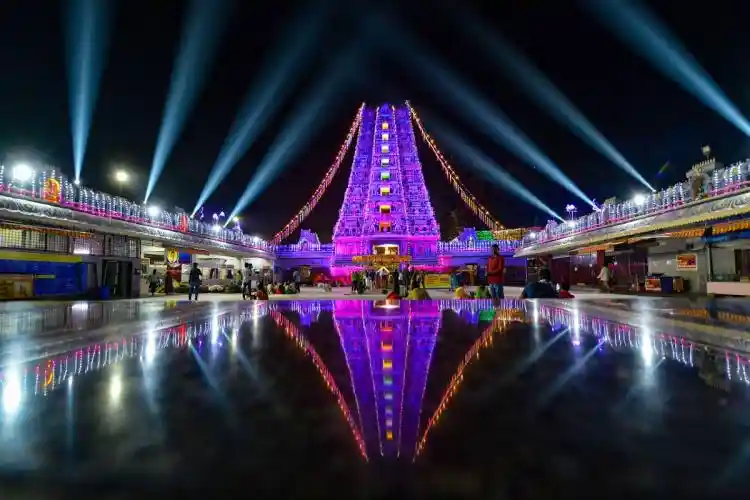
Kanaka Durga Temple during Dasara celebrations; Source: The News Minute
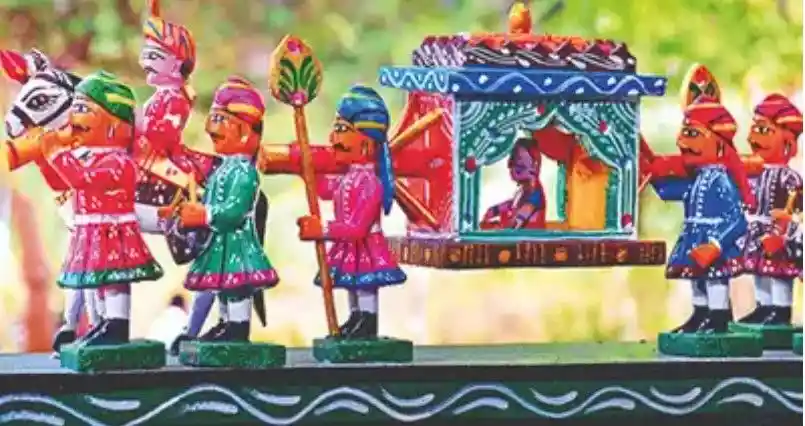
Kondapalli Toys; Source: The Times of India
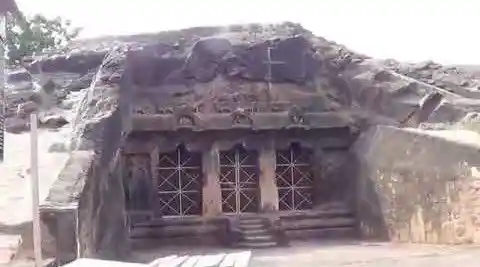
Mogalarajapuram caves; Source: DestiMap
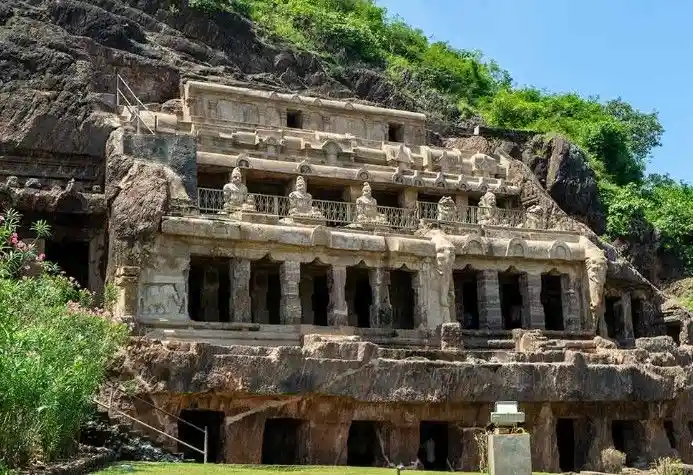
Undavalli caves of Vijayawada; Source: Magik India


